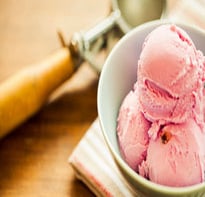"The magic begins here," reads the website for Ingredion, a company whose Texture Centre of Excellence helps the food industry achieve the perfect consistency for their products. Texture is big business and the science of food structure even has its own ology: food rheology. And yet in our every day enjoyment of eating, texture is often considered the poor relation of taste and smell (US research found that textural awareness was often subconscious). But the professionals know all too well that, while the sensory spotlight may fall on flavour when we're savouring a mouthful, get the texture wrong and it's game over - we'll reject it outright.
Identity issues
Not only does texture have a casting vote over a food's acceptability, it is also essential in identifying it. When researchers pureed and strained foods, young adults of normal weight were only able to identify 40.7% of them. Flavour alone is not enough.Advertisement
Sense and sensitivity
We are incredibly sensitive to texture. Touch is of course the primary sense we use to determine it, but kinesthetics (the sense of movement and position), sound (crunch: good, squeak: bad) and sight are also involved. We can detect ice crystals in ice cream measuring 40 microns (or 1/25th of a millimeter). Millions of pounds are spent in research and development to deter the growth of these harmless crystals. This is also why ice cream made with liquid nitrogen is so prized. It freezes so fast that the crystals are weeny, giving the creamiest mouth feel.Economics
In his geekily titled book, Food Texture and Viscosity, Concept and Measurement, Malcolm Bourne of Cornell University uses beef as an example of the vast economic implications of food's textural quality. The tougher the cut, the cheaper it is - despite the priciest, unblemished fillet steak lacking the flavour of fattier cuts on the bone. Bourne, who is a consultant for the food industry, says the three most relished texture notes are crispy, creamy and chewy. And food with more bite has become more popular in recent decades, he says, because dental health improvements have meant that many people keep their own teeth for most of their lives.Advertisement
The mechanics
We have, writes Bourne in his book, a "deeply ingrained need to chew". It starts in babyhood and continues right through to old age when, if we can afford it, we'll throw cash and inconvenience at fixing our teeth so we may continue to chew, even though we could just as well get our nutrition from soft or pureed foods. Gnawing is a satisfying business. It's good for you, too. A growing body of research indicates that it increases blood flow to the brain, which helps stave off dementia. A large Swedish study last year found that old people who could chew hard foods, such as apples, had a considerably lower risk of failing mental faculties.The world's worst textures
Food aversions are generally subjective, but there are definitely trends in unpopular textures. To the western palate, sliminess is often greeted with suspicion and associated with decay. Personally, I love a mushroom, but they are repeatedly berated for their "slug-like" and "rubbery" texture. Offal is my main textural foe. The most extreme textural revulsion occurs when we feel something unexpected in our mouths. If you pop in a chunk of chocolate only to find that it doesn't melt, or you're immersed in the gloopy wonder of a mushroom risotto and suddenly bite down on some grit, you get a rude awakening. An unsettling moment of panic that your food is rotten, or contaminated with something gross. But I want to end by thinking of all the sublime textures out there, like crunching a puffy meringue into sweet powder, revealing a satisfyingly chewy middle. What's your favourite? And where do you stand on mastication? Are you a religious 100-chews-per-mouthful type?The size of ice crystals in ice cream are vital. Photograph: Getty ImagesAdvertisement
For the latest food news, health tips and recipes, like us on Facebook or follow us on Twitter and YouTube.
Advertisement
